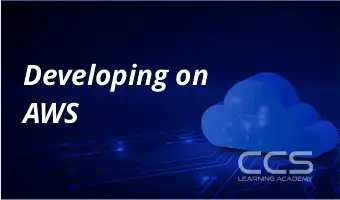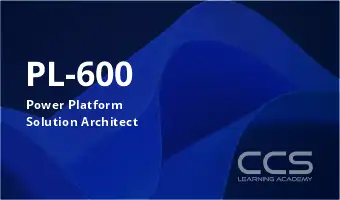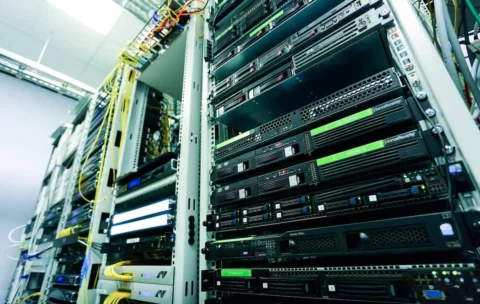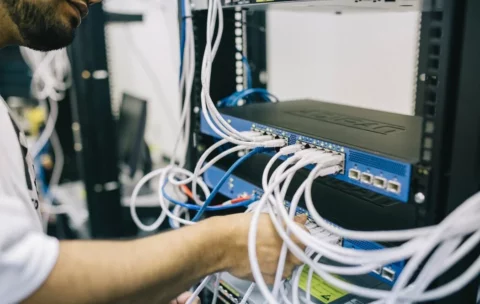Filter by Topic
Filter by Vendor
AWS Cloud Practitioner Essentials
Design, Deploy And Evaluate Applications With Our AWS Cloud Practitioner …
What you'll learn
Differentiate between on-premises, hybrid-cloud, and all-in cloud
Describe the basic global infrastructure of the AWS Cloud
Explain the six benefits of the AWS Cloud
Describe and provide an example of the core AWS services, including compute, network, databases, and storage
Identify an appropriate solution using AWS Cloud services with various use cases
Describe the AWS Well-Architected Framework
Explain the shared responsibility model
Describe the core security services within the AWS Cloud
Describe the basics of AWS Cloud migration
Articulate the financial benefits of the AWS Cloud for an organization’s cost management
Define the core billing, account management, and pricing models
Explain how to use pricing tools to make cost-effective choices for AWS services
What you'll learn
Set up the AWS SDK and developer credentials for Java, C#/.NET, Python, and JavaScript
Interact with AWS services and develop solutions by using the AWS SDK
Use AWS Identity and Access Management (IAM) for service authentication
Use Amazon Simple Storage Service (Amazon S3) and Amazon DynamoDB as data stores
Integrate applications and data by using AWS Lambda, Amazon API Gateway, Amazon Simple Queue Service (Amazon SQS), Amazon Simple Notification Service (Amazon SNS), and AWS Step Functions
Use Amazon Cognito for user authentication
Use Amazon ElastiCache to improve application scalability
Leverage the CI/CD pipeline to deploy applications on AWS
PL-600 Power Platform Solution Architect
Exclusive – The Solution Architect is responsible for the successful …
What you'll learn
Becoming a Solution Architect/Getting to know your customer
Conceptualizing the design from requirements
Project governance and working as a team
Power Platform Architecture
Data Modeling
Analytics and artificial intelligence
Power Apps Architecture
Application Lifecycle Management (ALM)
Power Automate Architecture
Security Modeling
Integration
Dynamics 365 Applications Architecture
Power Virtual Agents architecture
Robotic Process Automation
Testing and Go Live
Understanding Cisco Cybersecurity Fundamentals (SECFND) eLearning
Course Description: The Understanding Cisco Cybersecurity Fundamentals (SECFND) course gives …
What you'll learn
Describe network operations and attacks, basic cryptography concepts, and network infrastructure device operations
Describe basic Windows and Linux OS operations, common network applications and attacks, endpoint attacks, and network and endpoint security solutions
Describe security data collection and monitoring, and the common threat models that security operations organizations can reference when performing cybersecurity analysis
Designing Cisco Data Center Infrastructure (DCID) eLearning
Course Description: The Designing Cisco Data Center Infrastructure (DCID) v7.0 …
What you'll learn
Choose the appropriate components and design a scalable, reliable, and intelligent data center
Design data center network connectivity, including Layer 2 switching and Layer 3 forwarding
Design virtual port channel (vPC), Virtual Extensible LAN (VXLAN), and Cisco Overlay Transport Virtualization (OTV) in customer scenarios
Describe management options in the LAN
Describe hardware virtualization and Fabric Extender (FEX) technologies, including data center infrastructure management and automation options
Design a data center storage network, including Redundant Array of Independent Disks (RAID) options, Hyperconvergence, Fibre Channel and Fibre Channel over Ethernet (FCoE)
Describe the Cisco UCS C-Series and B-Series servers and distinguish among system-integrated stack solutions and management options for Cisco UCS domains
Design authentication, authorization, and accounting (AAA), role-based access control (RBAC) and resource parameters for a Cisco UCS domain, including resource pools and policies
Understanding Cisco Data Center Foundations (DCFNDU) eLearning
Course Description: The Understanding Cisco Data Center Foundations (DCFNDU) v1.1 …
What you'll learn
Describe the foundations of data center networking
Describe Cisco Nexus products and explain the basic Cisco NX-OS functionalities and tools
Describe Layer 3 first-hop redundancy
Describe Cisco Fabric Extender (FEX) connectivity
Describe Ethernet port channels and virtual port channels (vPCs)
Introduce switch virtualization, machine virtualization, and describe network virtualization
Compare storage connectivity options in the data center
Describe Fibre Channel communication between the initiator server and the target storage
Describe Fibre Channel zone types and their uses
Describe N-Port Virtualization (NPV) and N-Port Identifier Virtualization (NPIV)
Describe data center Ethernet enhancements that provide a lossless fabric
Describe Fibre Channel over Ethernet (FCoE)
Describe data center server connectivity
Describe Cisco UCS Manager
Describe the purpose and advantages of APIs
Describe Cisco ACI
Describe the basic concepts of cloud computing
Introducing Automation for Cisco Solutions (CSAU) eLearning
Course Description: The Introducing Automation for Cisco Solutions (CSAU) v1.0 …
What you'll learn
Articulate the role network automation and programmability play in the context of end-to-end network management and operations
Define and differentiate between waterfall and agile software development methodologies
Interpret and troubleshoot Python scripts with fundamental programming constructs built for network automation use cases
Describe how DevOps principles, tools, and pipelines can be applied to network operations
Understand the role of network automation development environments and associated technologies such as Python virtual environments, Vagrant, and Docker
Understand and construct HTTP-based API calls to network devices
Articulate the differences among and common use cases for XML, JSON, YAML, and Protobuf
Construct and interpret Python scripts using the Python requests module to automate devices that have HTTP-based APIs
Understand the role YANG plays in network automation
Understand that a number of tools exist to simplify working with YANG models
Describe the functionality of RESTCONF and NETCONF and the differences between them
Construct Ansible playbooks to configure network devices and retrieve operational state data from them
Build Jinja2 templates and YAML data structures to generate desired state configurations
Cisco Prime Performance Manager (CPPERF) eLearning
Course Description The Cisco Prime Performance Manager (CPPERF) Cisco Training …










